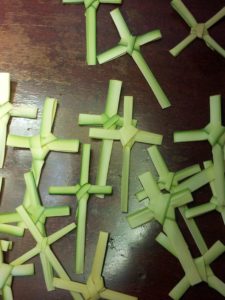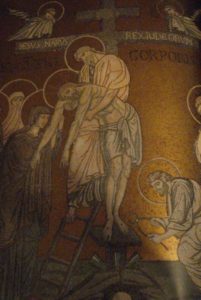Ours is an age when pilgrimages, processions and trekking have made a comeback.
Ours is an age when pilgrimages, processions and trekking have made a comeback. Whether we walk for our health, to enjoy the countryside or to take a spiritual journey, people usually walk with a purpose. Many walk the Camino, tracing the ancient way of pilgrims through the centuries. Others follow nature tracks made by Aboriginals or early Europeans. One memorable walk I’ve taken was the track around Uluru. My companions and myself found ourselves becoming completely silent and reflective as we realised that were walking on holy ground.
 We know that early Christians also took pilgrimages because we have diaries and letters that describe their journeys. One such journey was taken by Ignatius, bishop of Antioch, the journey of a prisoner on his way to his execution. One hundred years before, Jesus of Nazareth returned to Jerusalem to also face his death. Once a year we remember this final journey, also waving palm branches and singing hosanna. We take this ritual procession on Passion Sunday, the day that marks the beginning of the holiest week of the church’s calendar.
We know that early Christians also took pilgrimages because we have diaries and letters that describe their journeys. One such journey was taken by Ignatius, bishop of Antioch, the journey of a prisoner on his way to his execution. One hundred years before, Jesus of Nazareth returned to Jerusalem to also face his death. Once a year we remember this final journey, also waving palm branches and singing hosanna. We take this ritual procession on Passion Sunday, the day that marks the beginning of the holiest week of the church’s calendar.
Here at the Pacific Regional Seminary in Suva, Fiji, palm branches are in plentiful supply. On Passion Sunday we gather at the edge of the compound and, after hearing the Gospel of the triumphant entry into Jerusalem we begin our own journey through the coconut trees accompanied by unified strong and beautiful Islander voices that makes our procession triumphant and hopeful. We enter the chapel via an arch of palms and take our places to hear three powerful scripture readings: the Suffering Servant passage from Isaiah, the message to the Philippians of a Jesus who emptied himself, and yet one more Gospel – this year the story of the passion and death of Christ according to Matthew.
Each of us will hear the Word of God that we need to hear at this stage in our journey. Some of us have celebrated many Easters and wonder if this will be our last – especially those who are old and frail, or facing terminal illness. Others are full of youthful fervour and enthusiasm and feel only exhilaration and excitement as they prepare to take this final journey with Jesus towards Easter.
The tone of this liturgy is triumphant. We know the end of the story – Jesus suffers and dies and rises again to new life. After being fed by the word we will come to the table of plenty to share the bread and wine of suffering and joy. But that story hasn’t ended. Neither are we simply recreating a series of historical events that culminated in the death of Jesus of Nazareth. Now its Christ we commemorate. And the sign of Christ is us.
 We are Christ’s Body who are caught up in the Paschal Mystery of dying and rising. And we reach out to our sisters and brothers who may not know that Jesus has gone before them. The refugees that we continue to deny life, the homeless who are unable to find shelter, the lonely who are crying out for love and those caught up in addictions who can’t find a way to lasting peace. We bring these members of Christ Body with us on our journey to death, but with the hindsight of Easter hope.
We are Christ’s Body who are caught up in the Paschal Mystery of dying and rising. And we reach out to our sisters and brothers who may not know that Jesus has gone before them. The refugees that we continue to deny life, the homeless who are unable to find shelter, the lonely who are crying out for love and those caught up in addictions who can’t find a way to lasting peace. We bring these members of Christ Body with us on our journey to death, but with the hindsight of Easter hope.
Carmel Pilcher rsj
Images:
Thumbnail & Palm Sunday image obtained from Pxhere. Used with permission.
Christ’s Body is taken from the cross image obtained from Wikimedia Commons. Used with permission.
